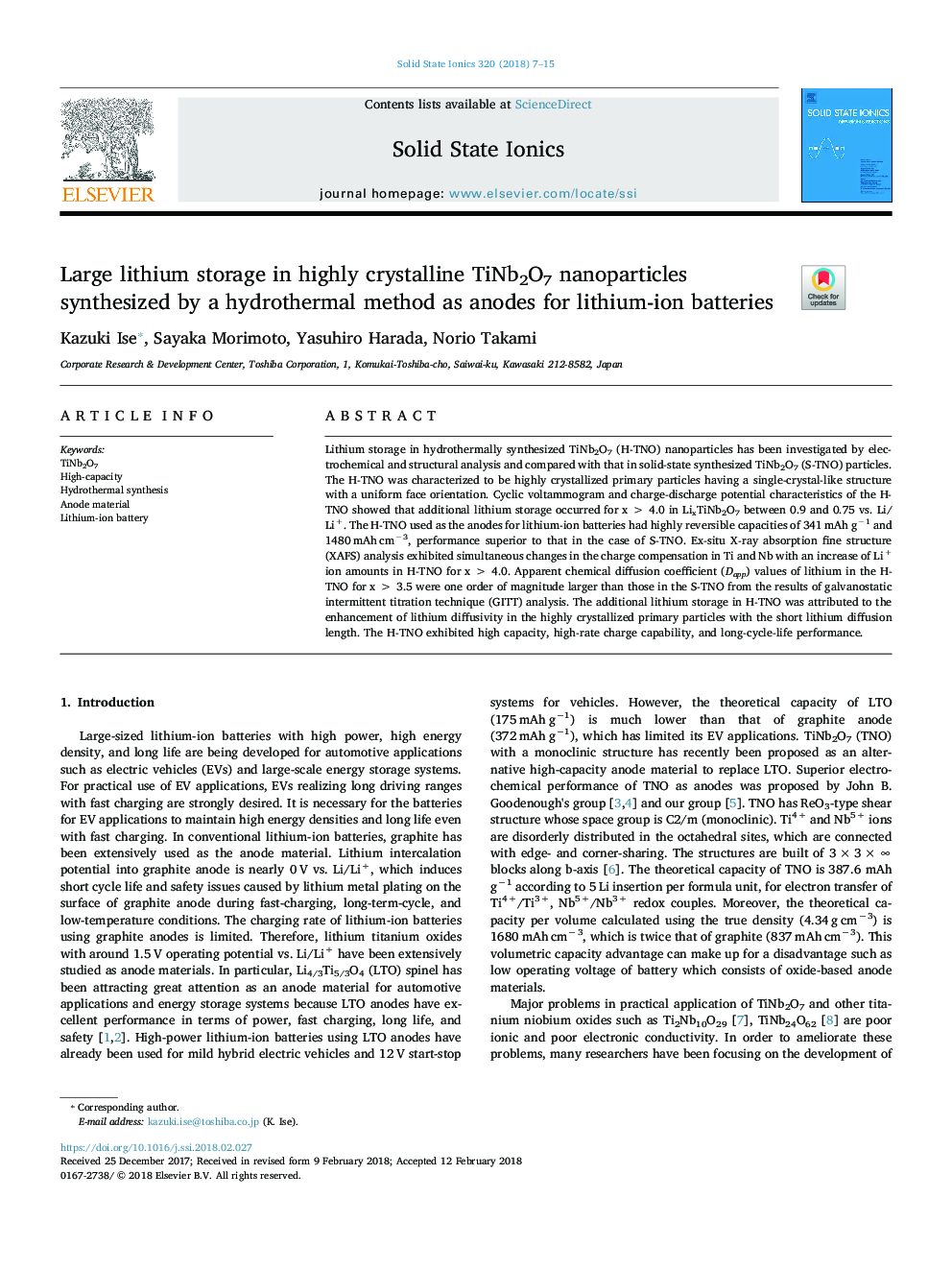| Article ID | Journal | Published Year | Pages | File Type |
|---|---|---|---|---|
| 7744356 | Solid State Ionics | 2018 | 9 Pages |
Abstract
Lithium storage in hydrothermally synthesized TiNb2O7 (H-TNO) nanoparticles has been investigated by electrochemical and structural analysis and compared with that in solid-state synthesized TiNb2O7 (S-TNO) particles. The H-TNO was characterized to be highly crystallized primary particles having a single-crystal-like structure with a uniform face orientation. Cyclic voltammogram and charge-discharge potential characteristics of the H-TNO showed that additional lithium storage occurred for xâ¯>â¯4.0 in LixTiNb2O7 between 0.9 and 0.75 vs. Li/Li+. The H-TNO used as the anodes for lithium-ion batteries had highly reversible capacities of 341â¯mAhâ¯gâ1 and 1480â¯mAhâ¯cmâ3, performance superior to that in the case of S-TNO. Ex-situ X-ray absorption fine structure (XAFS) analysis exhibited simultaneous changes in the charge compensation in Ti and Nb with an increase of Li+ ion amounts in H-TNO for xâ¯>â¯4.0. Apparent chemical diffusion coefficient (Dapp) values of lithium in the H-TNO for xâ¯>â¯3.5 were one order of magnitude larger than those in the S-TNO from the results of galvanostatic intermittent titration technique (GITT) analysis. The additional lithium storage in H-TNO was attributed to the enhancement of lithium diffusivity in the highly crystallized primary particles with the short lithium diffusion length. The H-TNO exhibited high capacity, high-rate charge capability, and long-cycle-life performance.
Related Topics
Physical Sciences and Engineering
Chemistry
Electrochemistry
Authors
Kazuki Ise, Sayaka Morimoto, Yasuhiro Harada, Norio Takami,
